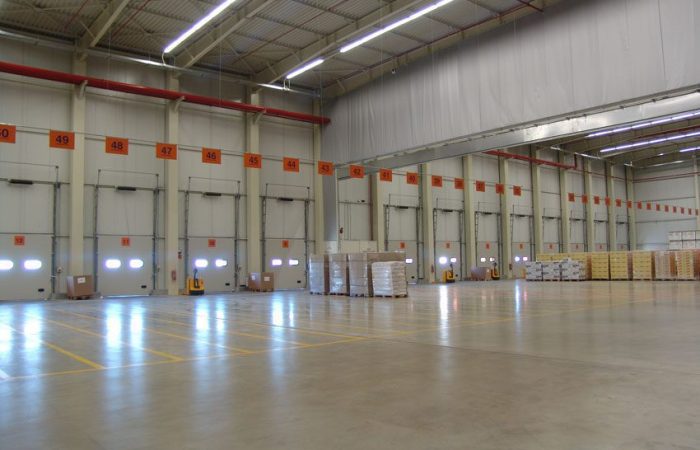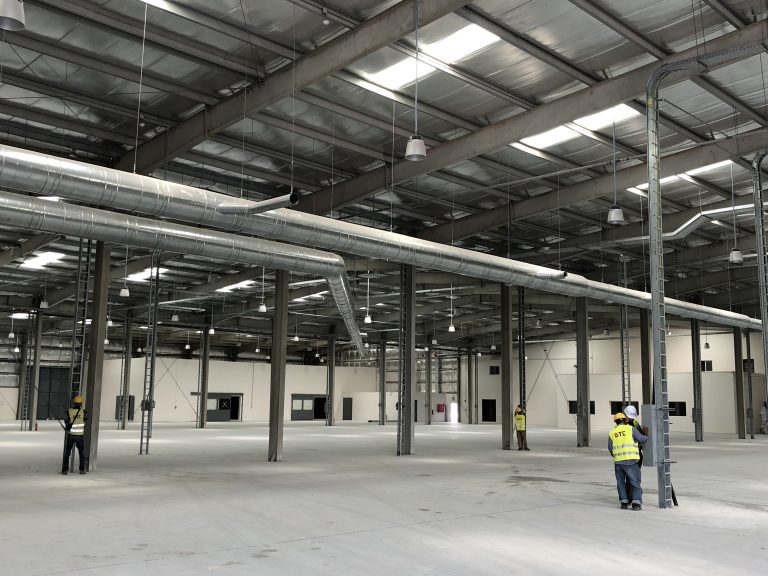concrete flooring JOINTED AND JOINTLESS SYSTEM
The concrete flooring industry has seen a lot of changes in recent years. One of the biggest changes has been the move away from jointed systems to jointless systems. Jointed systems are the traditional way of installing concrete floors. They involve placing joints in the floor at regular intervals to control cracking and shrinkage. Jointless systems, on the other hand, do away with joints altogether. There are a number of advantages to using jointless concrete flooring systems. They are easier to install, they provide a smoother surface, and they are more resistant to cracking and shrinkage. However, there are also some disadvantages to using jointless systems. They can be more expensive, and they may not be as durable as jointed systems. Which type of system is right for you will depend on your specific needs and preferences. If you’re looking for a durable, long-lasting floor, a jointed system may be the way to go. If you’re looking for an easy-to-install, smooth surface, a jointless system may be the answer.
concrete flooring
A concrete floor is a versatile and durable option for both commercial and residential properties. There are two main types of concrete flooring systems: jointed and jointless.
Jointed systems are composed of concrete slabs that are separated by expansion or control joints. These joints allow the concrete to expand and contract with changes in temperature, preventing cracks in the slab. Jointed systems can be either poured-in-place or precast. Poured-in-place systems are created on site, while precast systems are created off site and then transported to the job site.
Jointless systems are composed of a single slab of concrete that is not interrupted by expansion or control joints. This type of system provides a continuous surface that is less likely to crack than a jointed system. Jointless systems can be either poured-in-place or precast, but they are most commonly found in precast form.
concrete flooring JOINTED AND JOINTLESS SYSTEM
There are two main types of concrete flooring systems – jointed and jointless. Jointed systems have expansion joints between the concrete slabs, while jointless systems are designed to be monolithic (without joints).
Jointed systems are typically used in industrial and commercial applications where heavy loads and thermal expansion/contraction are expected. Joints help control cracking and provide a place for the concrete to expand/contract without damaging the rest of the floor.
Jointless systems are often used in residential applications where aesthetic appeal is more important than load-bearing capacity. Jointless floors have a smoother, more seamless appearance, and can be easier to clean since there are no cracks or crevices for dirt and debris to accumulate.
What is jointless flooring?
There are two types of concrete flooring systems – jointed and jointless. Jointed systems have expansion joints that allow the concrete to move as it cures, while jointless systems do not have these expansion joints.
Jointed flooring systems are the most common type of concrete flooring system. These floors are composed of concrete slabs that are separated by expansion joints. The expansion joints allow the concrete to expand and contract as it cures, without cracking the slab.
Jointless flooring systems are less common than jointed systems, but they offer some advantages. Jointless floors are composed of a single slab of concrete, with no expansion joints. This means that the concrete can expand and contract as it cures without cracking the slab.
Jointless floors also have a smoother surface than jointed floors, because there are no expansion joints to create bumps in the surface. This makes jointless floors easier to clean and maintain.
Are concrete floors hard on your joints?
Joints in concrete floors are necessary to control cracking that can occur as the concrete shrinks during the curing process. Without joints, cracks can form and propagate throughout the slab, which can ultimately lead to structural failure. However, joints also create trip hazards and can be difficult to clean.
Concrete floors are generally hard on your joints because of the presence of joints. However, there are some types of concrete flooring that do not have any joints, which can provide a smoother, more comfortable surface for walking and standing.
What flooring can go directly on concrete?
Jointed systems are the most common and allow for movement between slabs. This system is composed of expansion joints that separate the floor into manageable sections. Without these expansion joints, the weight of the concrete would cause cracking.
Jointless systems are newer but becoming more popular as they offer a seamless look. This system is composed of a minimum of three layers: a base layer, a wear layer, and a protective top coat. The absence of expansion joints in this system means that it can handle more weight and is better suited for areas that see high traffic.
What are the advantages and disadvantages of concrete flooring?
There are both advantages and disadvantages to concrete flooring. One advantage is that concrete floors are very durable and can last for many years with proper care. They are also easy to maintain and clean. Another advantage of concrete flooring is that it is very versatile and can be used in a variety of settings, both indoors and outdoors.
One disadvantage of concrete flooring is that it can be quite cold, so it may not be the best option for homes in colder climates. It can also be quite hard on the feet and back if you stand on it for long periods of time. Another disadvantage of concrete flooring is that it can be susceptible to staining and cracking over time.
Jointless Concrete Floors
Jointless concrete floors are an ideal solution for many industrial and commercial applications. They provide a smooth, level surface that is easy to clean and maintain. Jointless concrete floors are also highly resistant to impacts, abrasion, and chemical spills.
Why do we want jointless concrete floors?
Jointless concrete floors are becoming increasingly popular in both residential and commercial construction for a variety of reasons. Perhaps the most significant advantage of jointless concrete floors is their enhanced durability. Joints in concrete floors are susceptible to cracking and other forms of damage, which can eventually lead to the need for repairs or even replacement. Jointless concrete floors are much less likely to experience these problems, meaning they will last longer and require less maintenance over time.
In addition to their increased durability, jointless concrete floors also offer a more seamless appearance. Traditional concrete floors with joints can look unfinished or unsightly, while jointless concrete provides a clean, finished look that can greatly improve the overall aesthetic of a space. Jointless concrete is also much easier to clean and maintain, as there are no cracks or crevices for dirt and debris to collect in.
Overall, jointless concrete floors offer many advantages over traditional jointed concrete floors. They are more durable, more aesthetically pleasing, and easier to maintain. If you are considering concrete flooring for your home or business, be sure to ask your contractor about the possibility of installing a jointless system.
Jointless FM2 Floors
Jointed concrete floors are the traditional method of construction and have been used for many years. Jointed concrete floors are composed of individual slabs that are joined together with mortar or another type of bonding agent. The joints between the slabs allow for movement and help to control cracking.
Jointless concrete floors are a newer technology that is becoming more popular in both commercial and residential construction. Jointless concrete floors are composed of a single, monolithic slab that is poured in one continuous pour. The lack of joints in jointless concrete floors provides a number of advantages over jointed concrete floors.
Quality in Concrete Slabs: Jointless Floors
There are many types of concrete flooring systems available on the market today, each with its own set of benefits and drawbacks. One important factor to consider when choosing a concrete flooring system is whether or not you want a jointless system.
Jointless concrete floors are becoming increasingly popular due to their many benefits. A jointless floor is one that does not have any visible seams or joints, giving it a clean and uninterrupted appearance. Jointless floors are also much easier to clean and maintain than floors with visible joints, as there are no crevices for dirt and debris to collect in.
Another advantage of jointless concrete floors is that they are much more durable than floors with visible joints. The lack of joints eliminates potential weak points in the floor where cracks can develop over time. This makes jointless concrete floors an ideal choice for high-traffic areas that require a durable surface that can withstand heavy wear and tear.
If you’re considering concrete flooring for your home or business, be sure to ask your contractor about the benefits of jointless concrete floors.
Large Steel Fibre Reinforced Concrete (SFRC) floor slabs
Large steel fibre reinforced concrete (SFRC) floor slabs are an excellent choice for commercial and industrial applications where durability and strength are required. SFRC floor slabs have a high flexural strength and toughness, making them resistant to cracking and impact damage. They are also resistant to fire, chemicals, and abrasion.
SFRC floor slabs can be either jointed or jointless. Jointed SFRC floor slabs have expansion joints between the concrete panels to accommodate movement caused by thermal expansion and contraction. Jointless SFRC floor slabs are monolithic, meaning there are no expansion joints between the concrete panels. Both types of SFRC floor slabs have their own advantages and disadvantages.
Advantages of jointed SFRC floor slabs include easier installation, less chance of cracking due to thermal expansion and contraction, and better resistance to impact damage. Disadvantages of jointed SFRC floor slabs include the need for regular maintenance of the expansion joints and the potential for water infiltration through the joints.
Advantages of jointless SFRC floor slabs include a smoother surface finish, better resistance to chemical attack, and improved sound insulation properties. Disadvantages of jointless SFRC floor slabs include the potential for cracking due to thermal expansion and contraction, and the need for experienced installers since there is no room for error when pouring the concrete slab.
No matter which type of SFRC floor slab you choose, you can be
JOINTLESS STEEL FIBRE
Jointed systems are the traditional way of constructing concrete floors. They are easy to install and provide a high level of strength and durability. However, they can be susceptible to cracking and joint failure over time.
Jointless systems are a newer type of concrete flooring system that eliminates the need for joints. This makes them more resistant to cracking and joint failure, and provides a smoother, more finished look. Jointless systems can be more difficult to install, but the increased durability may be worth the extra effort.
Jointless Floors
Jointed systems have been used in concrete flooring for many years and are well known to the construction industry. However, recent technological advances have seen the development of jointless flooring systems, which offer a number of advantages over traditional jointed systems.
Jointless floors are constructed using a monolithic pour, meaning that there are no joints or weak points in the floor. This results in a much stronger and more durable floor that is better able to withstand heavy traffic and loads. Jointless floors also have a smoother surface finish, which is easier to clean and maintain.
The main advantage of jointless floors is their increased strength and durability. However, they also offer a number of other benefits, including improved aesthetics and easier maintenance. If you are considering concrete flooring for your next project, be sure to ask your contractor about jointless options.
DTC – Dorar tammam company
Dorar tammam company (DTC) is a leading provider of concrete flooring solutions in the Middle East. With over 19 years of experience, DTC has supplied thousands of projects with high quality concrete floors. DTC offers both jointed and jointless concrete flooring systems to meet the specific needs of each project.
The jointed system is composed of concrete slabs that are connected with expansion joints. This system is ideal for applications where thermal movement or vibration is anticipated. The jointless system consists of a continuous slab of concrete that is poured in one piece. This system is ideal for applications where a smooth, seamless finish is desired.














